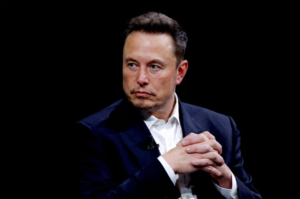Trump Leaves India Without Closing the Critical Trade Deals He Promised

Courtesy of CNN.com
By Eva Lynch
President Trump has concluded his two-day trip to India, where he was received by Indian Prime Minister Narendra Modi and a massive crowd in the Prime Minister’s hometown of Ahmedabad.
A combination of election news flooding the media and international coverage focusing on coronavirus (COVID-19) pushed Trump’s trip and budding relationship with Modi to the wayside. But the pair that has been called the two sides of the same coin attempted to strike up a trade deal this week that many are arguing warrants more attention than it has received.
This trip was an attempt to mitigate recently rising tensions regarding trade with India, after Trump placed stricter tariffs on steel and aluminum. These graduating tariffs combined with Trump’s ultimate decision to strip India of its preferential trade status triggered anger from Indian officials and retaliatory responses.
However, Trump is returning to the United States without having closed the trade deals he promised, leaving many Americans disappointed with a hopeful visit that seemed to be all show and no substance.
Many Americans say that what makes matters worse is Trump’s neglect to press Modi on the religious persecution afflicting Muslims in New Delhi, ignited by a new citizenship law that expedites the asylum-seeking process for refugees of all South Asia’s major religions, except Islam. When the new legislation was first announced, officials reassured Muslims that they had nothing to worry about because the law only aimed to help refugees. However, many critics raised concern when considering the effects of this law alongside the effects of another recent law requiring citizens to prove their citizenship with papers many do not have. Residency is a privilege reserved for those who can produce papers, and Indian officials are reportedly already building detention camps to house those who cannot do so, many of whom are Muslims.
Some Indians who have left India following Modi’s reelection and subsequent increase in state-sanctioned violence report they are not surprised by these discriminatory laws, including professor at the London School of Economics, Sumantra Bose.
“This is a natural progression, given the nature, logic and purpose of the Modi-Shah government,” Bose said.
The legislation sparked peaceful protests which in turn sparked animosity with Hindu nationalists. The city continues to count its dead little more than a week after the first riots. President Trump’s trip did little to address the issue, or the seven lives taken during another Hindu-nationalist riot the morning of his arrival. During a recent news conference, when questioned regarding his conversation with Modi about the riots, Trump responded that religious freedom had come up during his private talks with Modi, and that his answer was “incredible.” Trump’s shallow answer led many critics to believe he was not as forceful in his interrogation as the situation demands.
Pictures of New Delhi following the gruesome riots depict war-like neighborhoods, with recently displaced refugees waiting outside black charred skeletons of their houses, hoping not to be counted as one of the dead yet hiding among them to avoid more harm and persecution.
Trump’s visit will be remembered for its own images: a stadium-sized welcoming committee that mirrored Trump’s rally goers, a romantic walk-through of the Taj Mahal with his wife Melania, and numerous tributes to famous Indian independence leader Mahatma Gandhi, whose legacy of overwhelming humility outlasts him.
“This has been a very special visit—unforgettable, extraordinary,” Trump said of his visit. “What can you say? Very, very wonderful to be with you.”







